Cyanobacteria 101: Solving A Dangerous Problem
Toxins, Classification, Dominance, Key Thresholds, and Solutions for Lake Managers
By

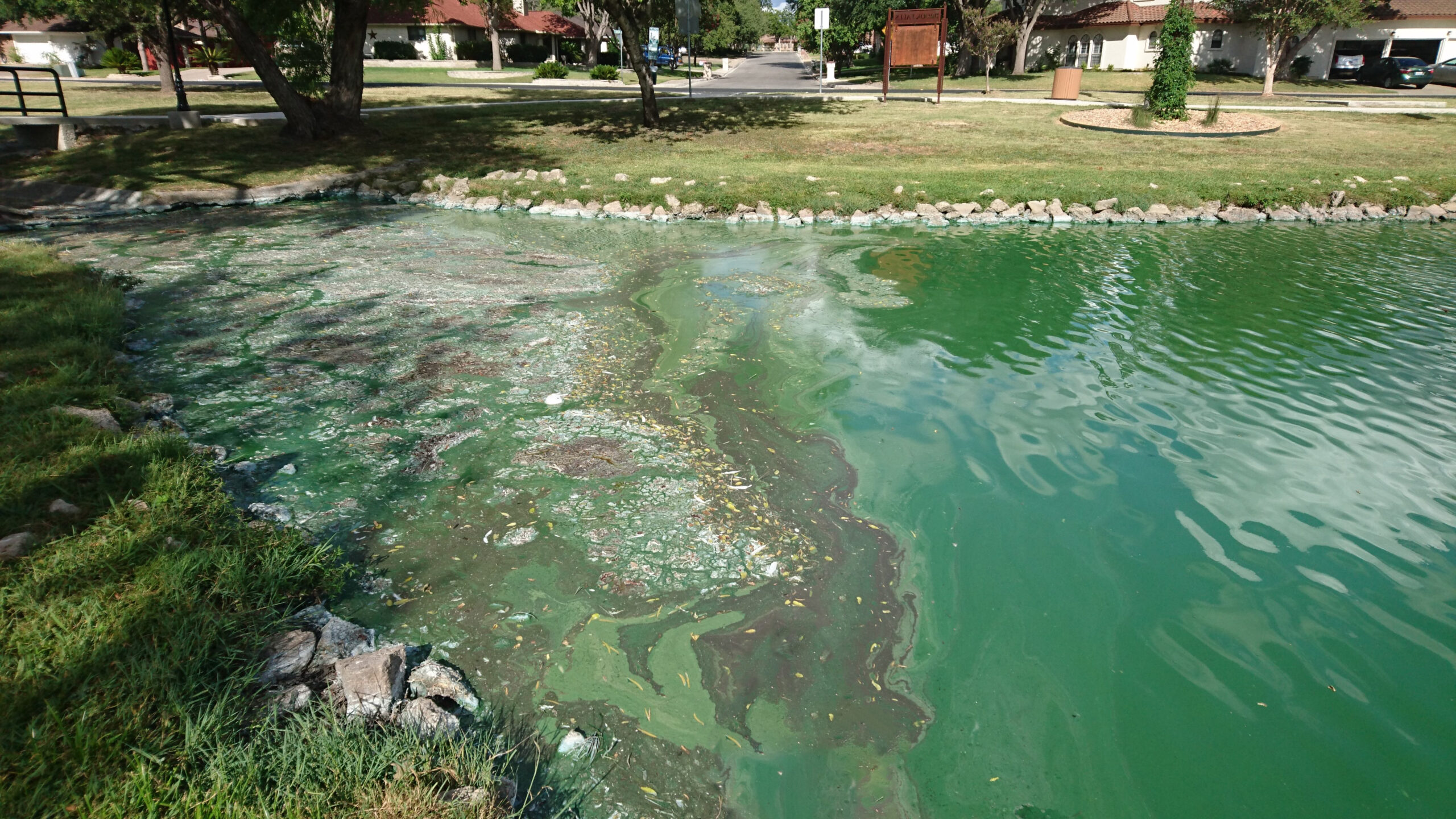
The final and ultimate stage of eutrophication is when cyanobacteria dominance becomes permanent in a lake. Cyanobacteria are often thought of as algae, but they are not. They are photosynthetic bacteria with chlorophyll-a and bluish accessory pigments called phycobilins, hence the colloquial name “blue-green algae.” These prokaryotic bacteria are a dead-end ecologically and aesthetically, and perhaps worst of all, they can produce potent toxins such as:
- Neurotoxins (anatoxins and saxitoxins) – cause rapid paralysis of skeletal and respiratory muscles (minutes).
- Hepatotoxins (microcystin, cylindrospermopsin, nodularins) – disrupt proteins that keep the liver functioning, may act slowly (days to weeks).
- Dermatotoxins (lyngbyatoxin, aplysiatoxin, debromoaplysiatoxin) produce rashes and other skin reactions, usually within a day (hours).
Each year, acute toxicity of cyanobacteria toxins can be directly related to fish, livestock, waterfowl, and dog deaths worldwide. Acute toxicity of cyanobacteria toxin exposure to humans results in many becoming ill each year and, in some cases, causes death. The low-dose, long-term exposure to cyanobacteria toxins by people consuming fish, drinking water, or even living near lakes (aerosolized toxins) with cyanobacteria has resulted in increased health risks of Amyotrophic Lateral Sclerosis (ALS), Alzheimer’s, Parkinson’s disease, liver cancers, and tumor production (Caller et al. 2009; Bradley et al. 2013). These health implications have led organizations like the World Health Organization (WHO) to establish public health guidelines as outlined in Table 1 (Christoffersen and Kaas 2000; Zanchett and Oliveira-Filho 2013; Chorus and Welker 2021).
Table 1: Guidance Values for the Relative Probability of Health Effects from Exposure to Cyanobacteria Blooms and Microcystin. Taken from the World Health Organization (2000)
Major Problematic Freshwater Cyanobacteria
Of the thousands of cyanobacteria that have been identified, only a few (~100) major culprit species exist in three classes and six orders when using modern taxonomic classification.
Class Synechococcineae
Order Synechococcales (e.g. Aphanocapsa, Coelosphaerium, Synechococcus)
Order Pseudanabaenales (e.g. Pseudanabaena, Schizothrix, Spirulina)
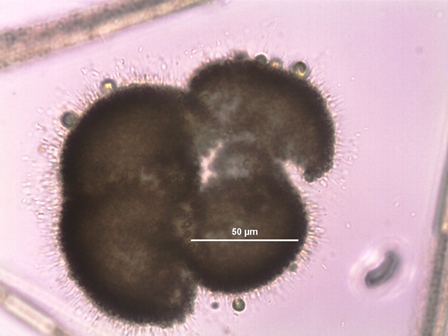
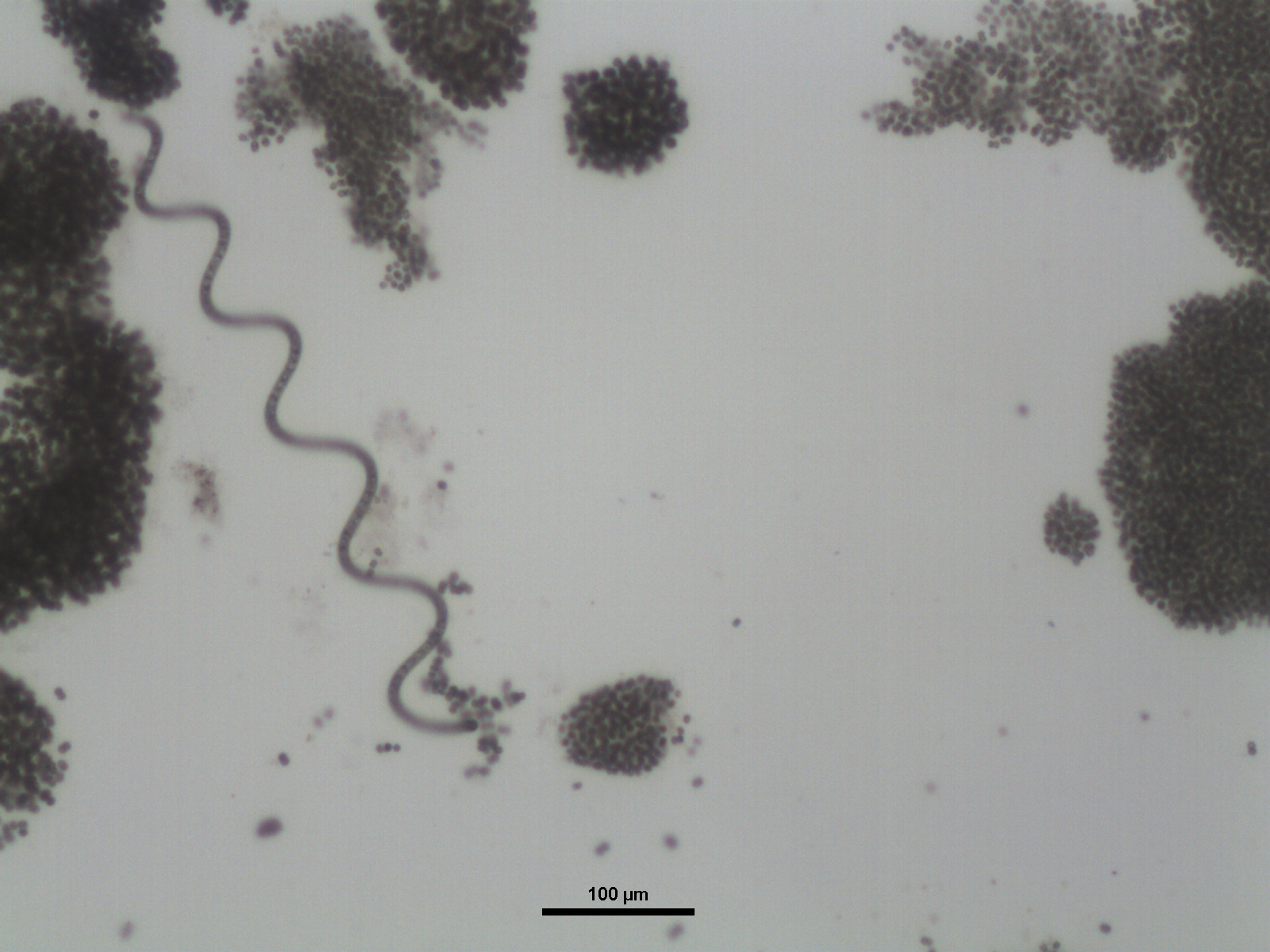
Fig. 1 Coalspherum
Fig 2. Spirulina
Class Oscillatoriineae
Order Chroococcales (e.g. Chroococcus, Microcystis)
Order Phormidiales (e.g. Arthrospira, Phormidium, Planktothrix)
Order Oscillatoriales (e.g. Lyngbya, Oscillatoria)
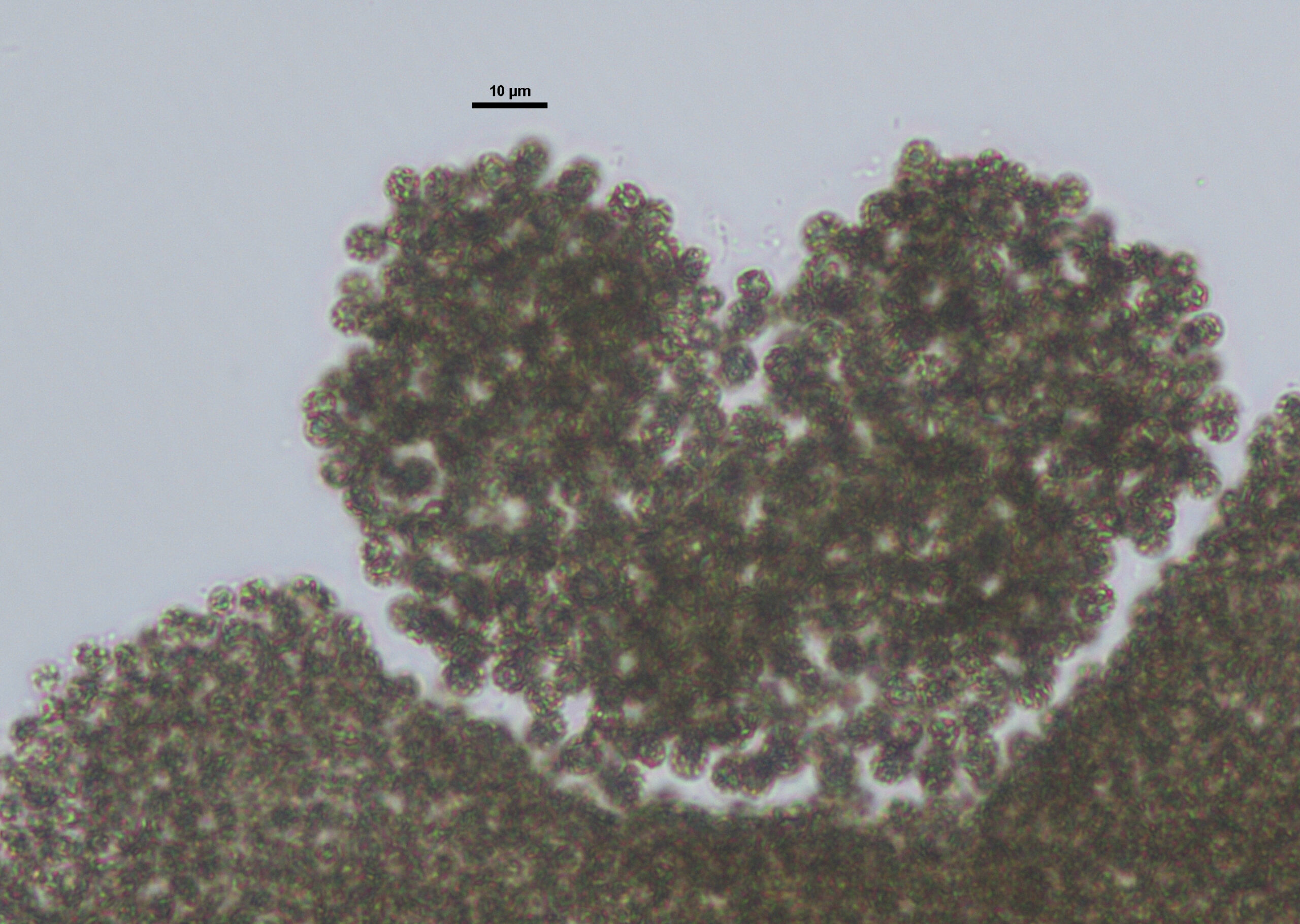
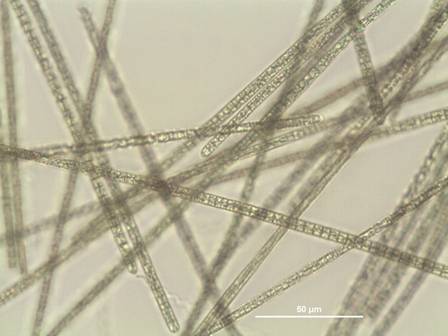
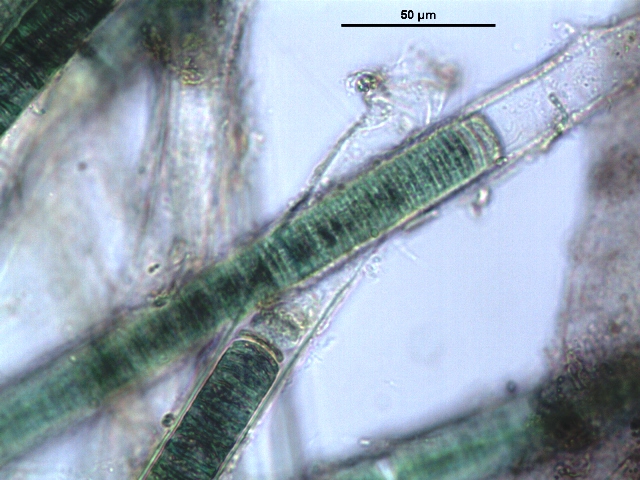
Fig. 3 Microcytis
Fig. 4 Planktothrix
Fig. 5 Lyngbya
Class Nostocineae
Order Nostocales (e.g. Anabaena, Cylindrospermopsis, Scytonema, Stigonema)
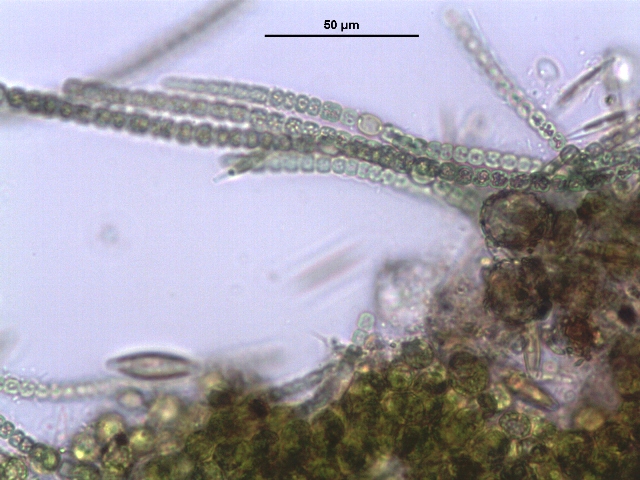
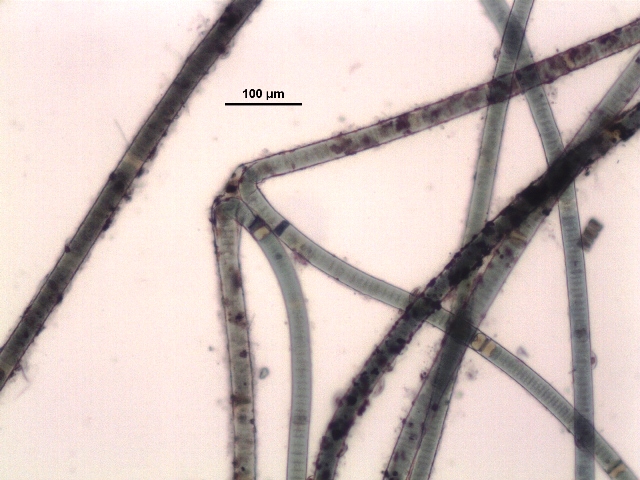
Fig. 6 Anabaena
Fig. 7 Scytonema
What Makes Cyanobacteria So Competitive?
- Superior growth and photosynthesis at higher temperatures (>86ºF). Store sugars as food reserves—they are best metabolized at higher temperatures.
- High affinity for nitrogen and phosphorus when nutrient limitation is most severe. Can perform luxury nutrient uptake and storage.
- Ability to regulate their position in the water column by gas vacuoles to take advantage of areas richer in nutrients and/or light.
- Superior light-capturing abilities when self-shading is the greatest.
- Reduced zooplankton grazing via toxin production and having poor nutritional value.
- Superior uptake kinetics for inorganic carbon (low CO2 / high pH waters).
- Can fix atmospheric nitrogen.
Key Management Thresholds
Based on decades of research, almost all freshwater cyanobacteria blooms are driven by nutrients, primarily phosphorus and nitrogen. Phosphorus tells us how severe a cyanobacteria bloom can be (the number of algae and toxins present), while nitrogen tells us the type of species present (toxic vs. non-toxic). In general, it is recommended that total phosphorus levels be maintained at < 24 µg/L P and total nitrogen at < 850 µg/L N for swimming recreation waters. The ideal total phosphorus and nitrogen level for fisheries management is < 48 µg/L P and <1,200 µg/L N. Maintaining these thresholds will significantly reduce the chances of cyanobacteria blooms. While these are helpful starting thresholds, developing a lake-specific nutrient criterion based on individual lake characteristics is best.
Management Solutions
Typically, treatment for cyanobacteria blooms takes a reactive approach by using algaecides. There are many different algaecide formulations, and selecting the right one will depend on your lake goals and the type of cyanobacteria present. Incorporating biocatalysts such as Pondzilla Pro and AquaSticker with your algaecide treatments will improve efficacy and degradation dramatically. Then, adding Temperature Driven Solutions post-treatment will counter many of the negative impacts of algaecides (bacterial sterilization) and prolong treatments 2-3 folds.
A more proactive approach to permanently stop cyanobacteria blooms from forming is by incorporating nutrient removal products to your regular pond maintenance. Natural Lake Biosciences’ nutrient mitigation products allow lake managers to set specific nutrient criteria for phosphorus and nitrogen. Products like MuckBiotics, MetaFloc, and Water Column Clarifier can not only address these specific nutrient concerns but can help aid in creating a healthier environment for your water body. Product selection and dosing will depend on the sources and forms of nutrient loading. Contact a certified Natural Lake applicator for more information regarding cyanobacteria management solutions.
References
Bradley, W. G., A. R. Borenstein, L. M. Nelson, G. A. Codd, B. H. Rosen, E. W. Stommel, and P. A. Cox. 2013. Is exposure to cyanobacteria an environmental risk factor for amyotrophic lateral sclerosis and other neurodegenerative diseases? Amyotrophic Lateral Sclerosis and Frontotemporal Degeneration 14: 325–333. doi:10.3109/21678421.2012.750364
Caller, T. A., J. W. Doolin, J. F. Haney, and others. 2009. A cluster of amyotrophic lateral sclerosis in New Hampshire: a possible role for toxic cyanobacteria blooms. Amyotrophic Lateral Sclerosis 10: 101–108.
Chorus, I., and M. Welker. 2021. Toxic cyanobacteria in water: a guide to their public health consequences, monitoring and management, Taylor & Francis.
Christoffersen, K. and H. Kaas. 2000. Toxic cyanobacteria in water. A guide to their public health consequences, monitoring, and management. Limnology & Oceanography 45: 1212–1212. doi:10.4319/lo.2000.45.5.1212
Zanchett, G., and E. C. Oliveira-Filho. 2013. Cyanobacteria and cyanotoxins: from impacts on aquatic ecosystems and human health to anticarcinogenic effects. Toxins 5: 1896–1917.
Tip of the day:
Adding Pondzilla Pro or AquaSticker to your algaecide treatments as your first line of treatment can help prevent cyanobacteria from reaching dangerous levels.

About the Author
Patrick Goodwin, M.S., CLM, serves as a Water Resource Specialist at Natural Lake Biosciences, bringing over a decade of expertise in water resource management. He specializes in collecting data to assess nutrient loading and its impacts on algal blooms and water clarity. With a proven track record of restoring numerous water bodies, Patrick is recognized as an authority in implementing oxygenation and circulation techniques.
Stay Up to Date With The Latest News & Updates
Subscribe Below for Natural Lake Biosciences Updates and Event Invitations!

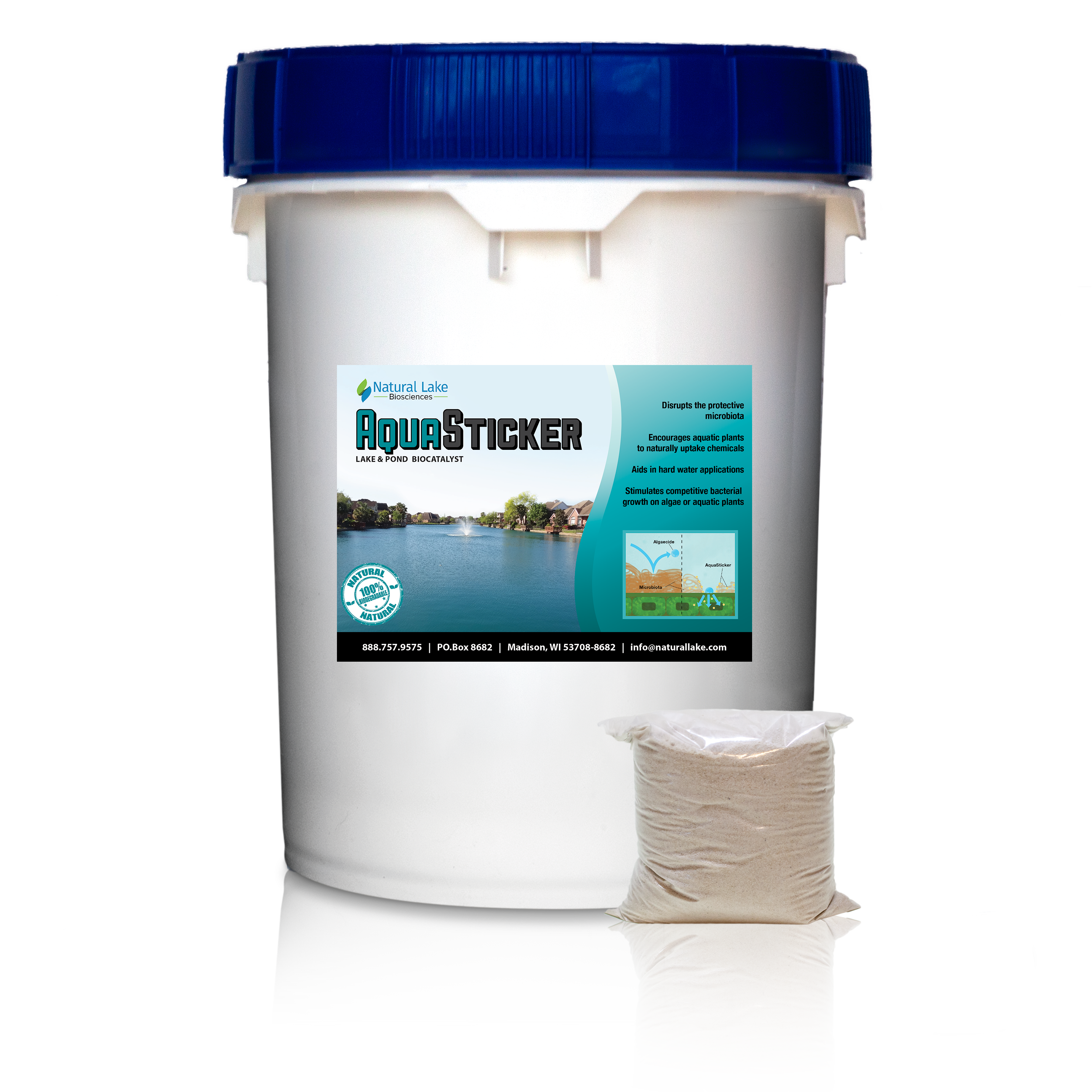
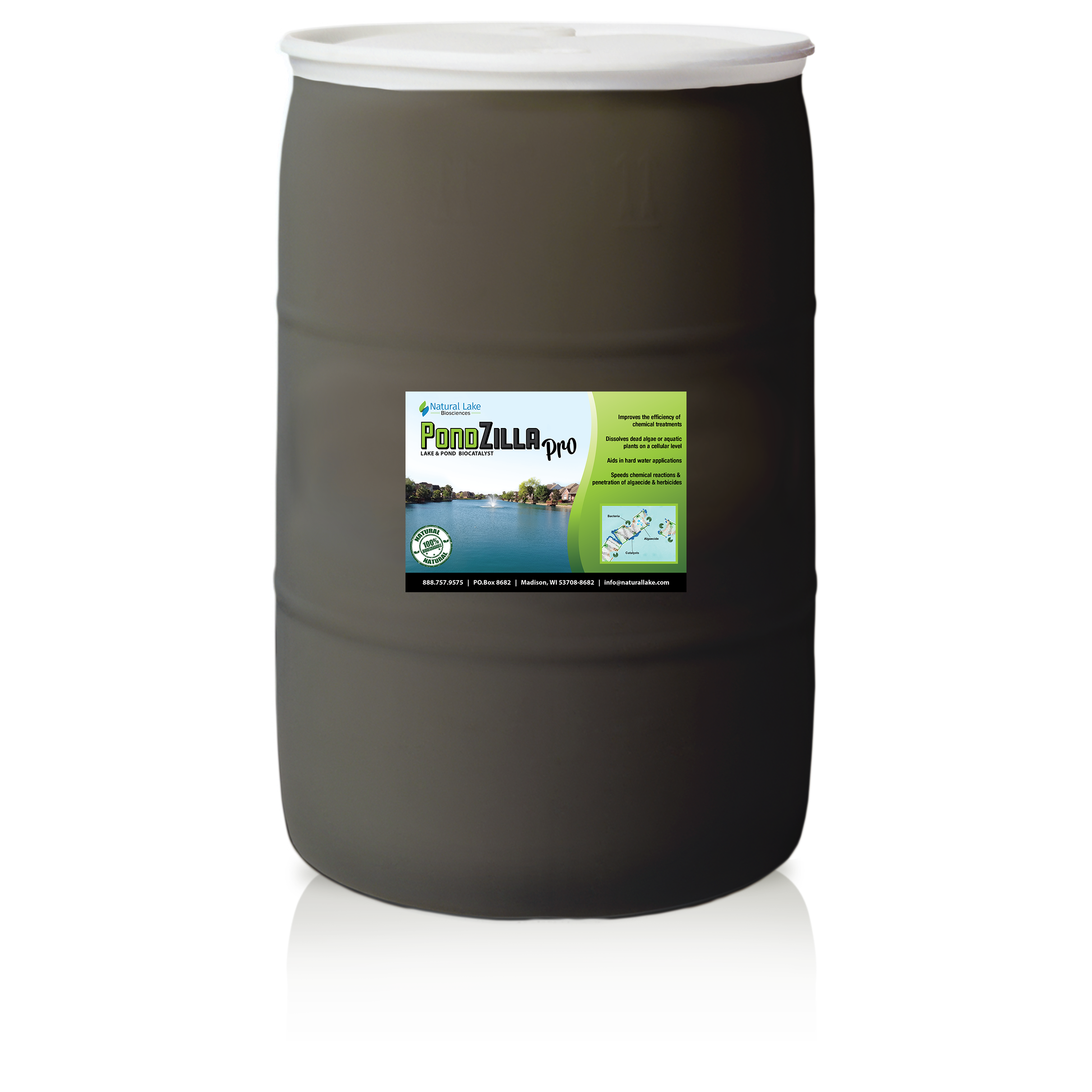
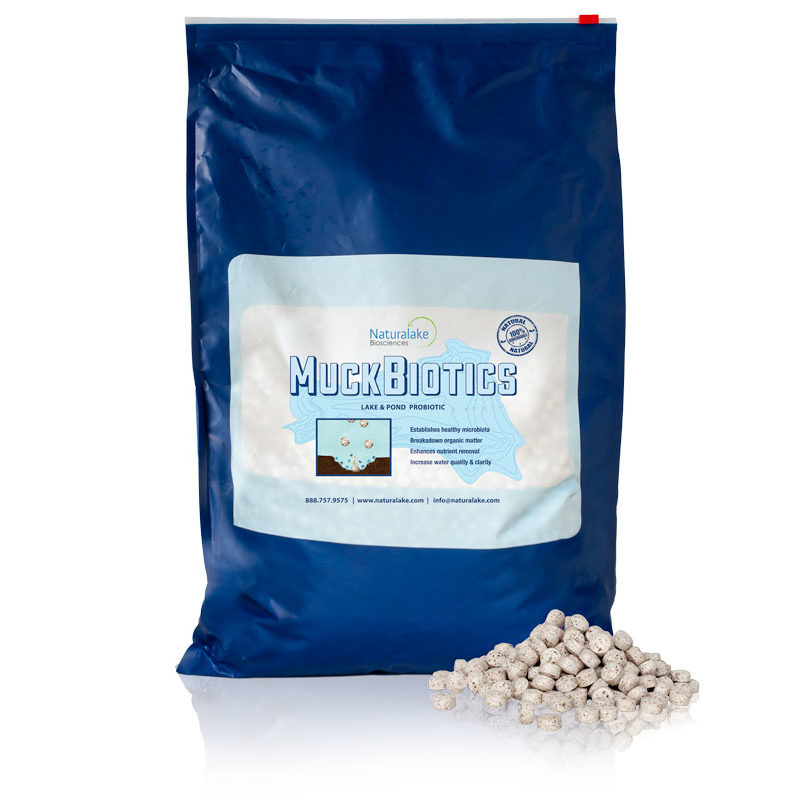
0 Comments